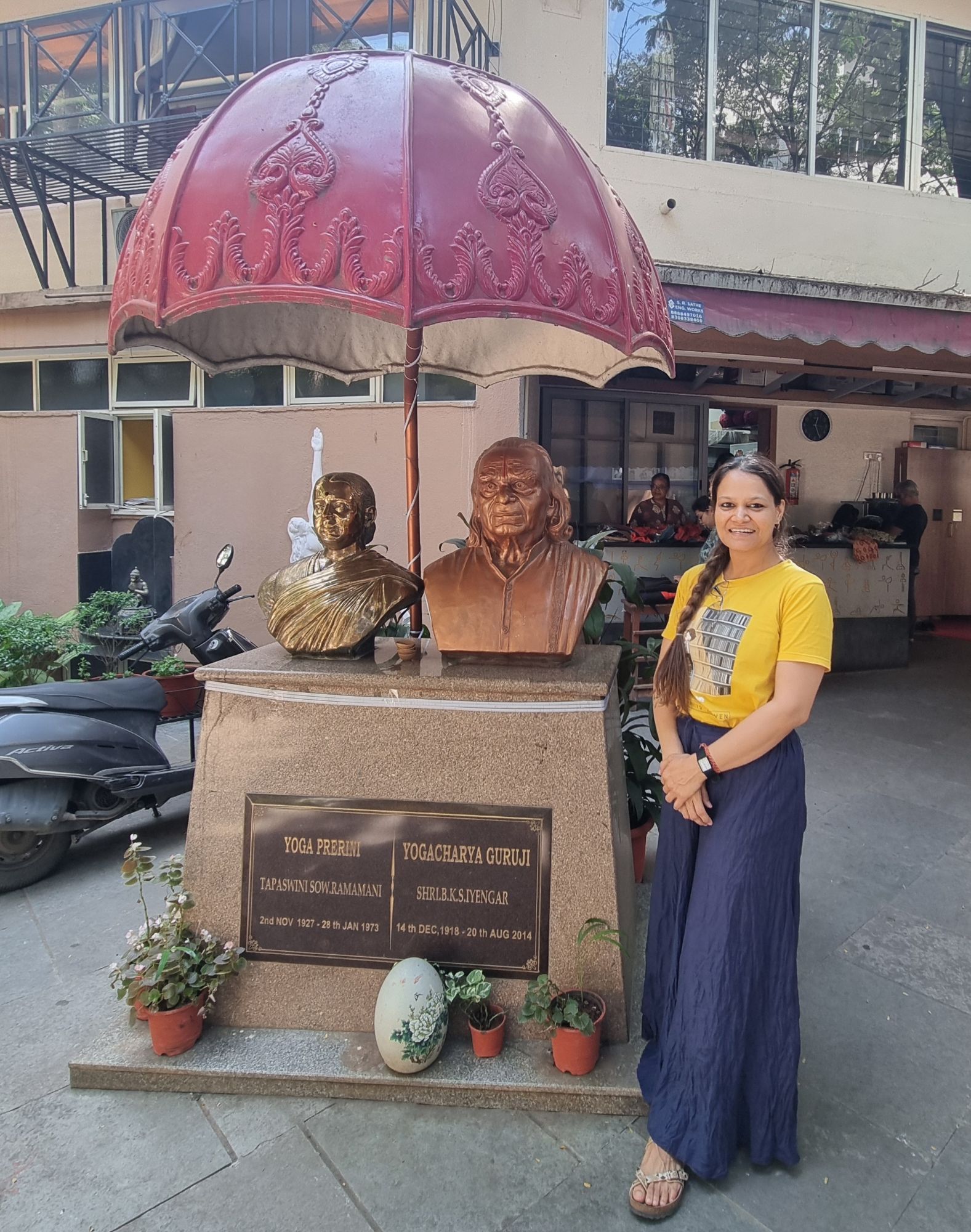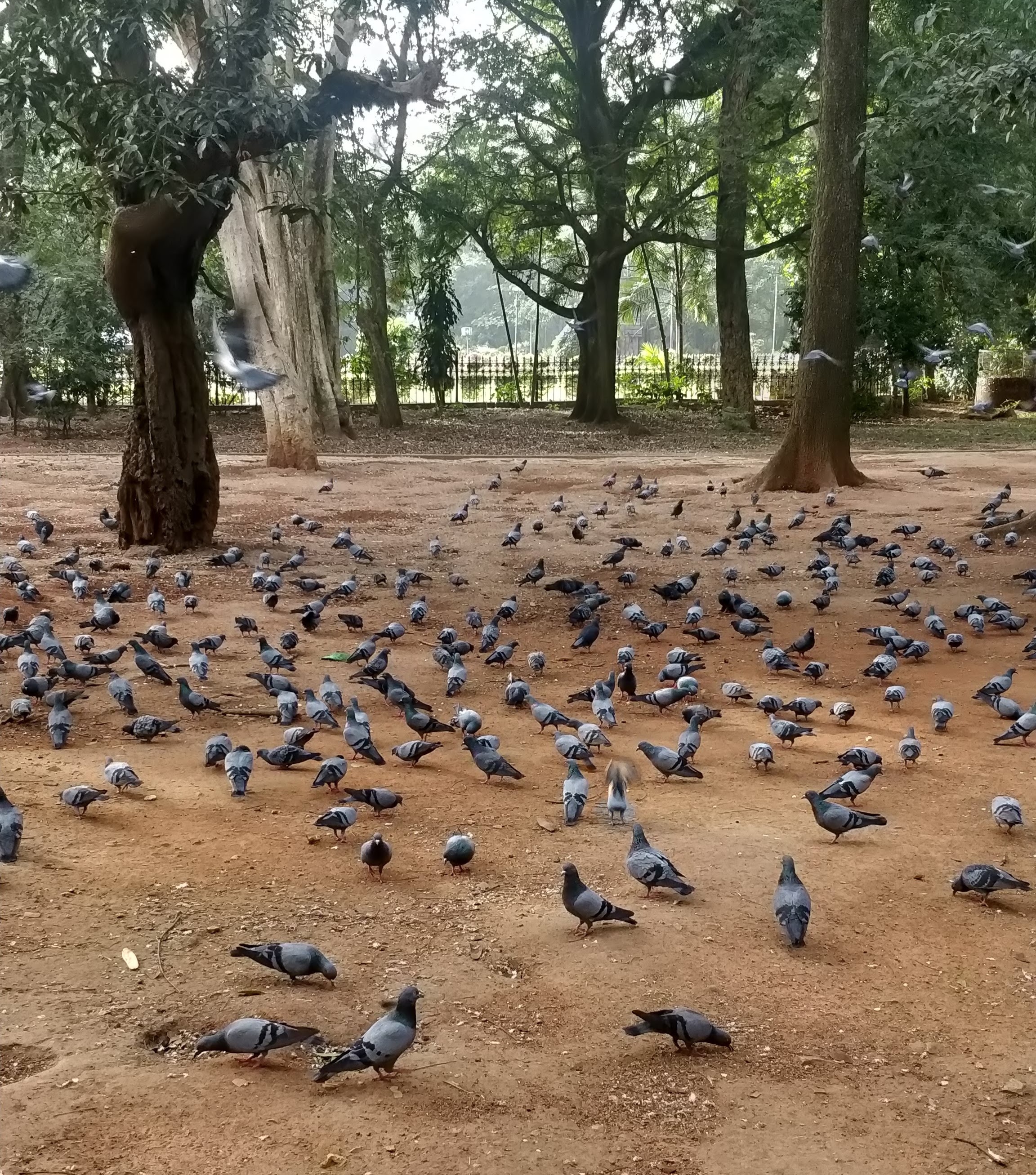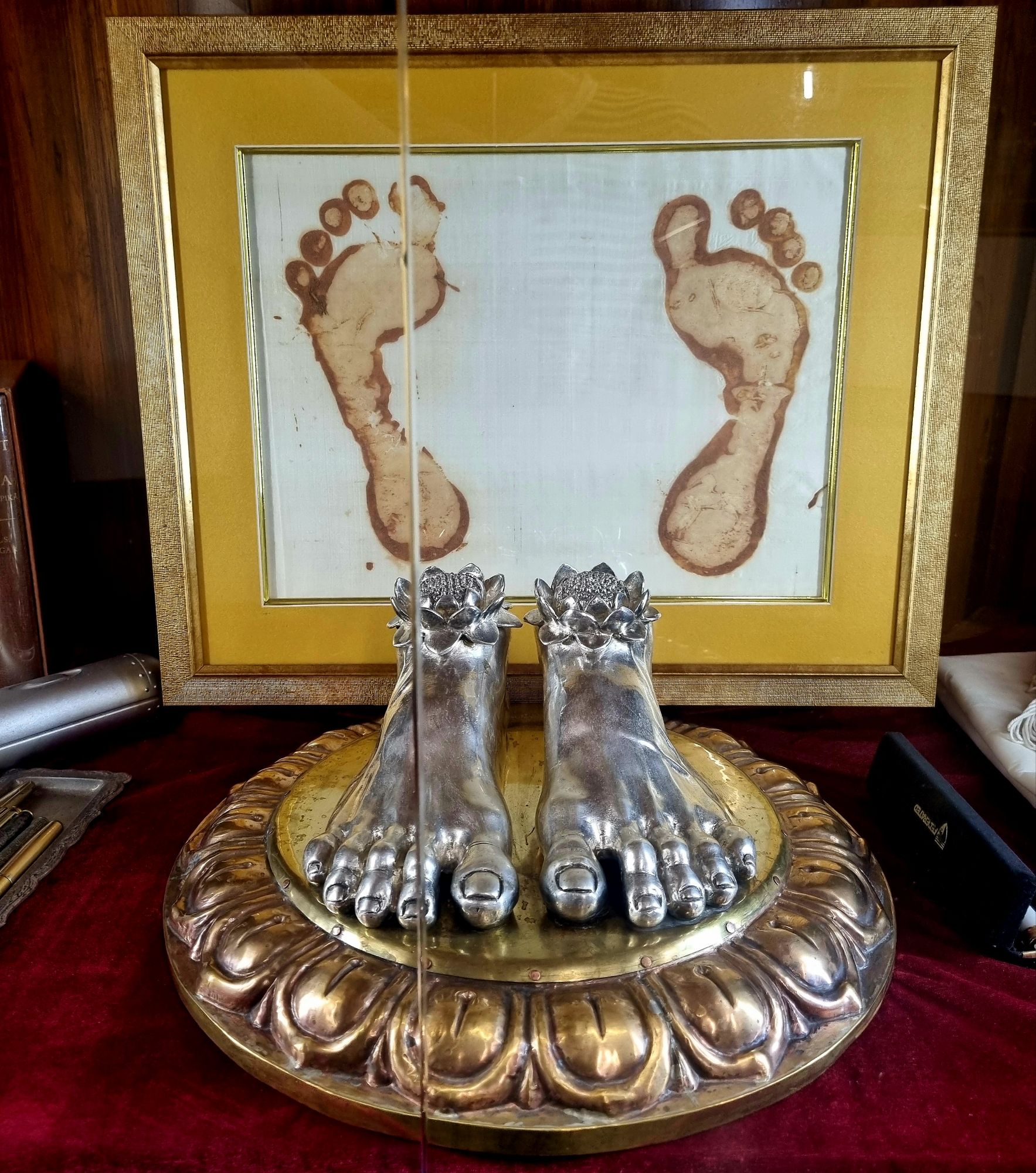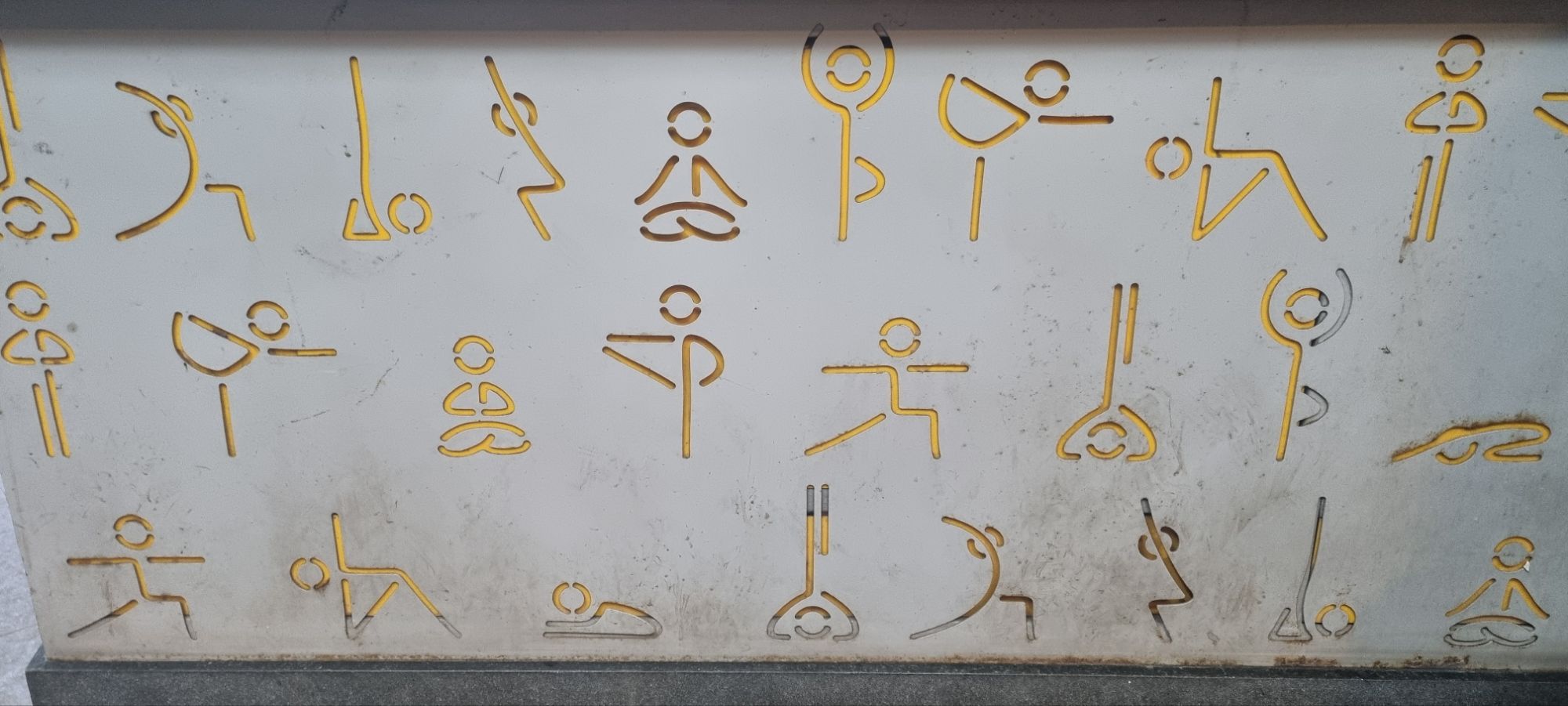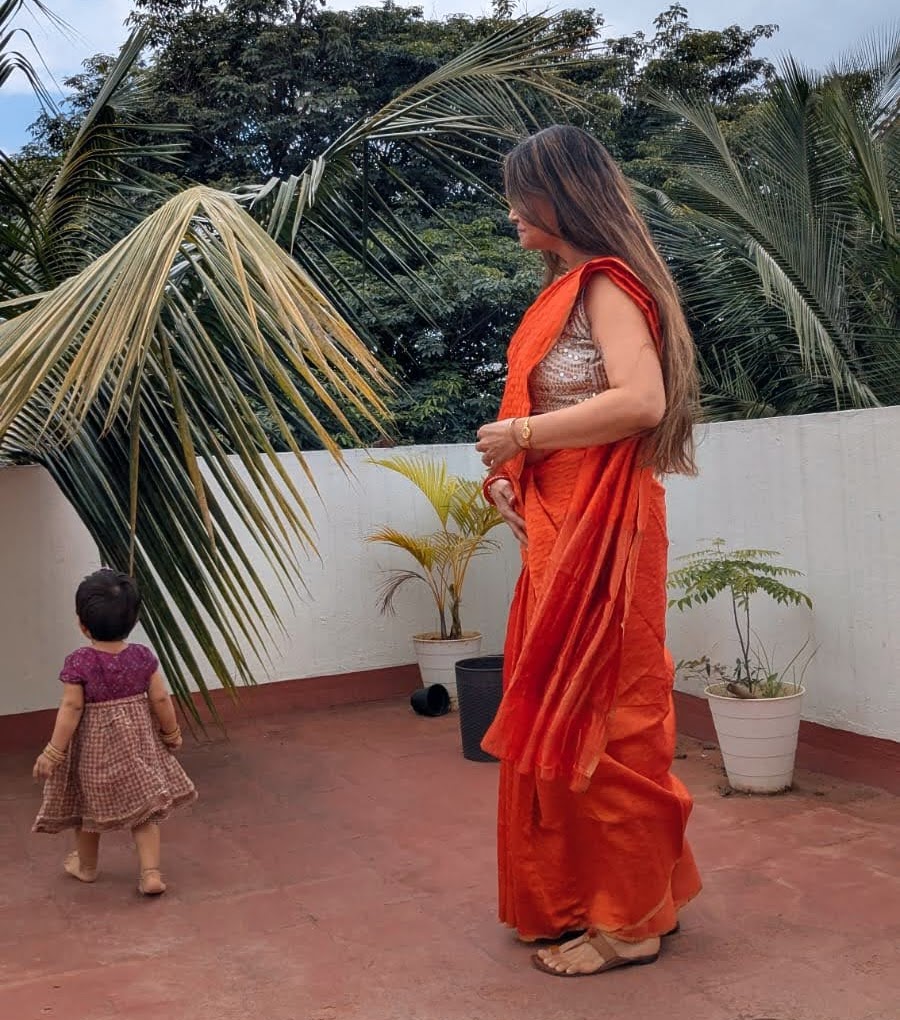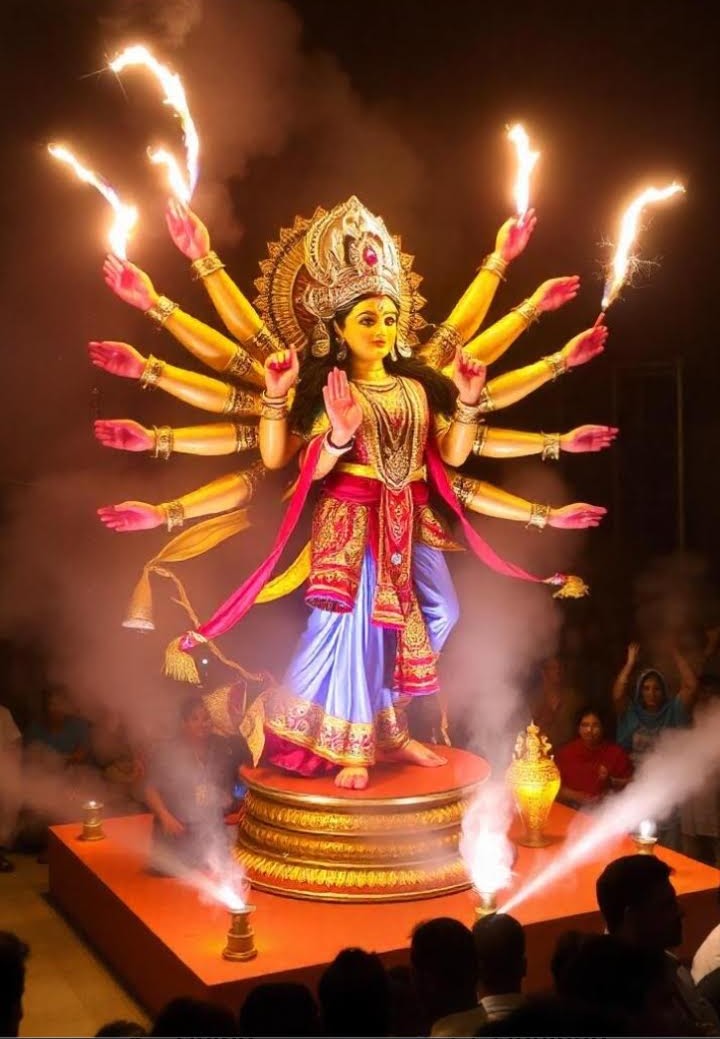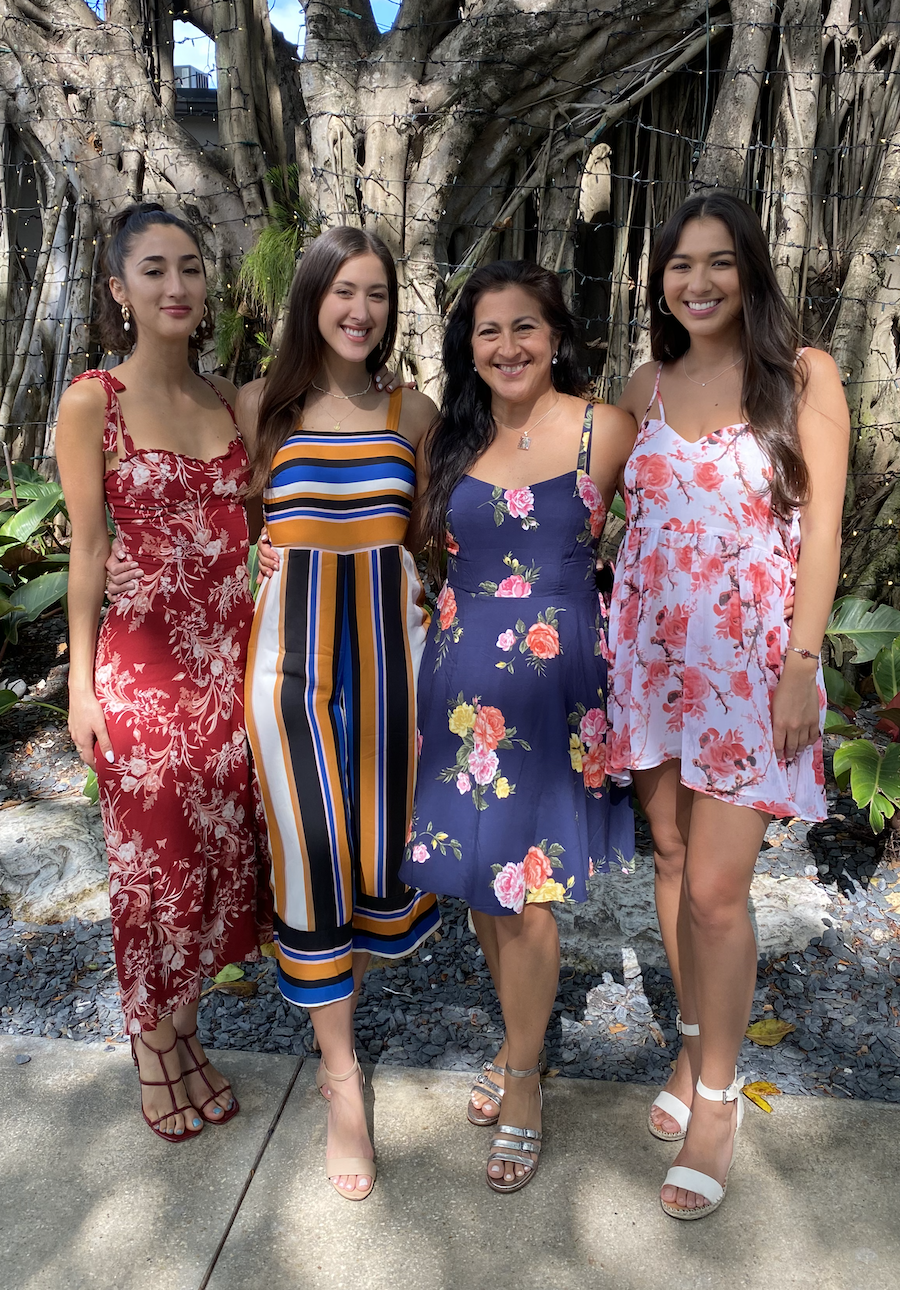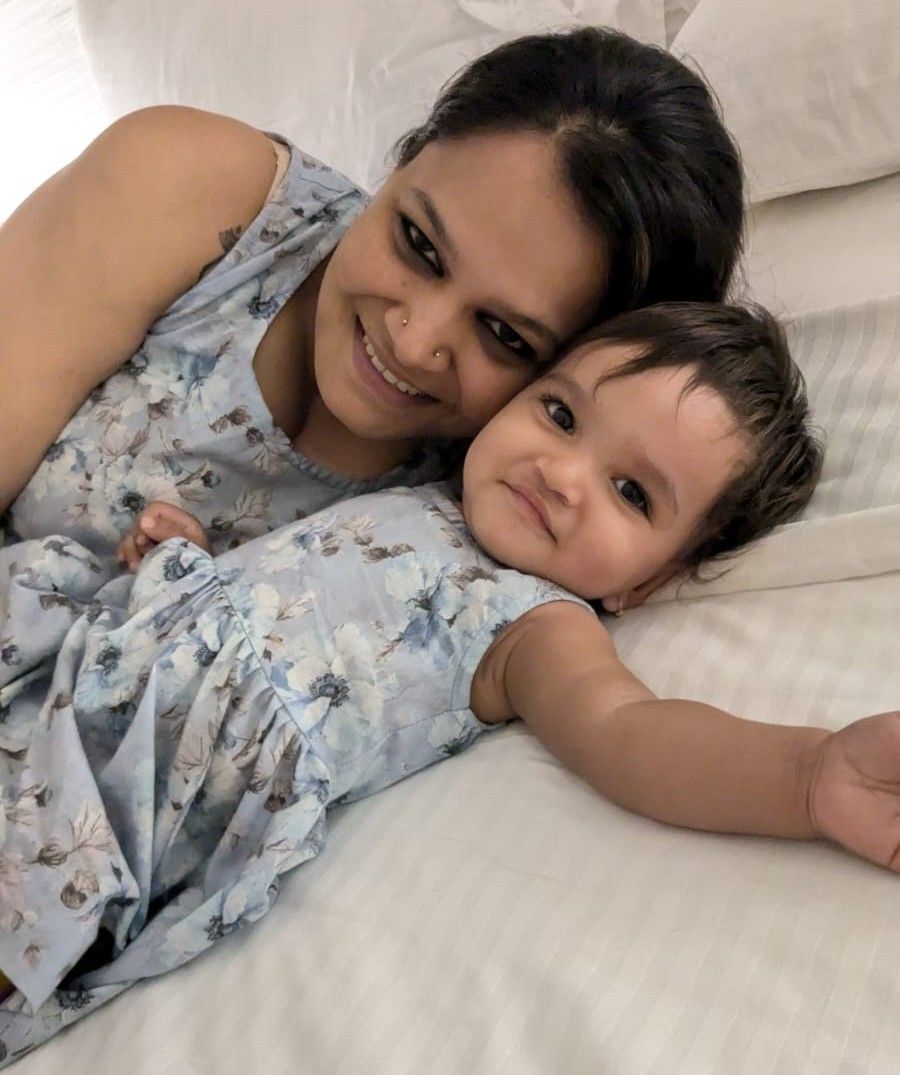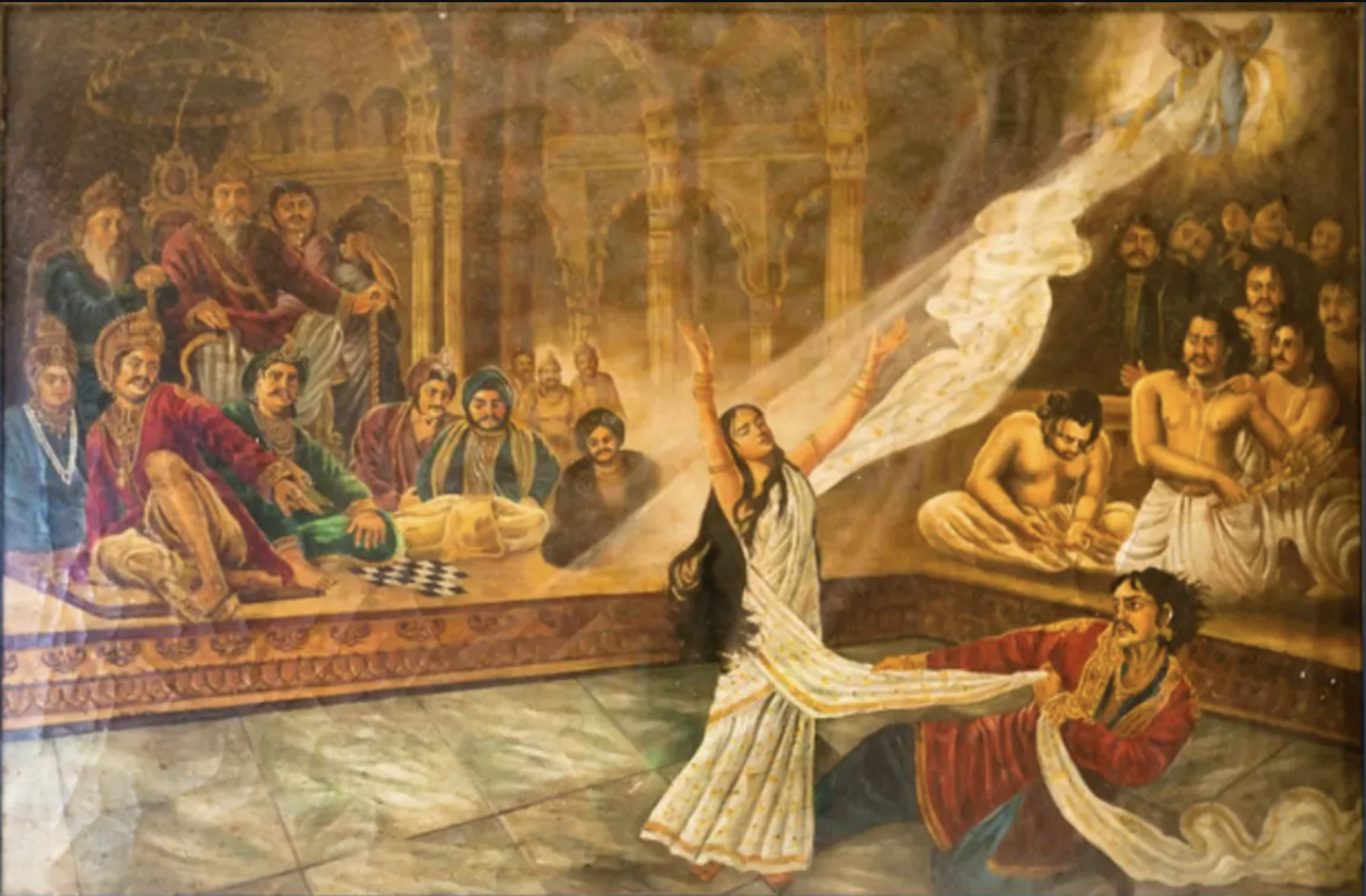The Various Seasons of Yoga
I’d love to say that now, when my daughter is one and a half, I have a fixed routine for yoga practice. Pre-pregnancy I would wake up at 4.30 to practice. Now those days seem like ancient history. Today my days are a disorganised mix of teaching, practice, working out, trying to get a full night’s sleep, writing, school runs…I’m grateful I can practice with some regularity, but often pine for those days when I turned in at 9 and woke up at 4.30, ready to give my practice my all.
I have started attending RIMYI online classes again, a practice that feels especially grounding during Navratri. More often then I’d like, I end up following along with the pre-recorded Iyengar yoga sessions. I’d love to say it’s an hour and a half I have to myself, a time when I can immerse myself in the yoga. But the truth is Kalindi often joins me on the mat, and wants to type on the keyboard or play with the TV remote. She clings to my legs when I’m in downward dog, or lies down on the mat, making me want to cuddle with her. Often I find myself speeding through a class to avoid interruptions.
This morning’s class was a restorative session, and at the end of the class when we were lying in supta baddhakonasana with our arms stretched out and chests wide open, Raya spoke about Navratri, drawing our attention to Durga’s strength. What he said was perhaps the most relevant thing I’ve heard in a long time.
Continue Reading
